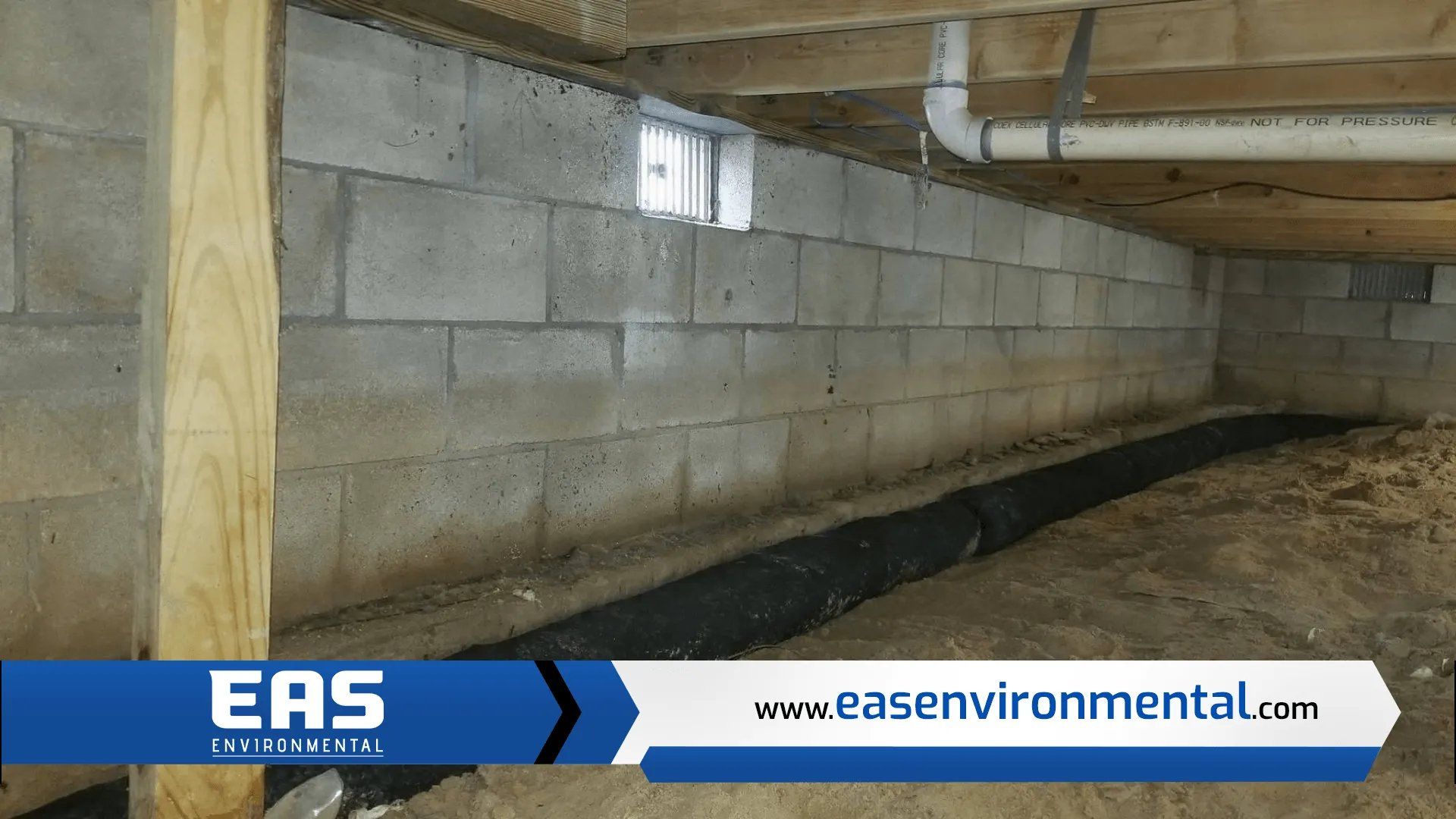
Are your feet getting wet when you walk around your home? Is there moisture on the walls? If so, it could be time to invest in a crawl space French drain. Don’t worry, this isn’t as daunting as it sounds! Think of a crawl space French drain as an insurance policy against water damage. It’s easy to set up and can save you money in the long run.
What is a Crawl Space French Drain?
A crawl space French drain is essentially a trench that catches water from the foundation walls and funnels it away from your home. The trenches are typically lined with gravel or other porous stones, then filled with sand or similar material for drainage purposes. This allows the water to infiltrate into the soil instead of pooling around your foundation and potentially causing damage. The trenches also need to be connected to a sump pump or other drainage system that can move the water away from your home.
Why Do I Need One?
If you live in an area where there is significant rainfall or snowmelt, then having a crawl space French drain installed should be high on your list of priorities. Without one, you risk having excess moisture seep into your home’s foundation, which can lead to costly repairs over time. Additionally, if left unchecked, this moisture can attract pests like spiders and cockroaches, which are difficult to get rid of once they start nesting.
What are the benefits of having a crawl space French drain?
The primary benefit of having a crawl space French drain is that it helps protect your foundation from flooding and other moisture-related problems. A quality installation also helps keep mold, mildew, and other pollutants out of your basement or crawlspace as well. This can help improve both air quality and energy efficiency in these areas. Additionally, having a properly installed system can prevent future settlement issues and structural problems by keeping soil erosion to a minimum near your foundation walls.
Another benefit of having a properly installed system is that it can help reduce humidity levels in these areas as well. This can help prevent mold growth as well as reduce odors associated with excess moisture in these areas. Finally, having this type of system in place can potentially save money on repairs down the road due to its ability to protect against water-related damage such as cracked foundations or rotten wood beams/joists due to long-term exposure to moisture over time.
Is It Worth It?
The answer is yes! Not only does having a french drain installed to protect your home's foundation from potential flooding due to excessive rainfall, but it also helps improve air quality inside by removing dampness which can lead to mold growth and other unhealthy substances circulating through your household’s air supply. Additionally, having one installed could potentially save you money on repairs down the line since any damage caused by floodwater would be prevented due to its presence. On top of all that, installing one isn't too expensive; depending on how large an area needs coverage (and other factors) prices for having one installed can range anywhere from $500-$3000 - much less than what repairs from flood water damage could cost later on down the line!
How can a crawl space French drain help with water problems?
Are you dealing with water problems in your crawl space? Do you have a soggy, musty-smelling basement that needs help desperately? If so, it may be time to consider installing a crawl space French drain. It might sound intimidating, but fear not! French drains are an effective and relatively easy way to tackle your water issues.
A crawl space French drain is a system of piping and gravel designed to divert water away from your home’s foundation. A trench is dug around the perimeter of the crawlspace, then lined with a drainage pipe that’s connected to a sump pump. The trench is then filled with gravel or crushed stone, which helps disperse the collected water and direct it away from the foundation of your home.
Why should I have a crawl space French drain installed by a professional?
Having a professional install a French drain in your crawl space can help keep it dry and free of moisture-related issues like wood rot and mold growth. Plus, the installation process doesn’t take long – usually just one day – and is relatively inexpensive compared to other solutions for preventing moisture buildup in your crawl space.
Additionally, installing a French drain yourself can be difficult, since you need to make sure it's installed correctly so that it works as intended. That’s why it’s best to leave it to an experienced contractor; they will make sure everything is done properly so that you don't end up with even more problems down the line.
Without a french drain, what could happen to my crawl space?
A French drain is an important tool for keeping your crawl space free from moisture, but what happens if you don’t have one? After all, it's not like you're looking down there often. It can be easy to forget about the dark and musty crawl space until something bad happens. So, what could happen if you don't have a French Drain installed?
Mold & Mildew
Without proper drainage, moisture will accumulate in your crawl space and create an environment that’s perfect for mold and mildew growth. Mold spores are tiny, so they can easily travel through the air vents of your home and cause health problems such as allergies, asthma, skin irritation, and more. Not only that but they release unpleasant smells throughout the house. And let’s face it, who wants their house to smell like mildew?
Insect Infestations
Insects love damp places—especially since these dark and dank areas provide them with plenty of food sources. If you don’t have a French drain installed in your crawl space, then you can expect to find all kinds of creepy-crawly critters living down there such as cockroaches, spiders, ants…you name it! Plus, many of these pests can climb up into your home through cracks or other small openings.
Foundation Problems
Excess moisture in your crawl space can also damage the foundation of your home over time due to soil erosion or hydrostatic pressure. This can lead to costly repairs down the line if left unchecked. On top of that, water vapor rising from the ground can condense on insulation materials located above the ground surface which causes even more water damage.
Keeping Your French Drain Fresh and Functioning
If you want to keep your home dry and free from water damage, then a French drain is the way to go. But just like any other home improvement project, it needs maintenance to keep it functioning at its best.
Regular Check-Ups
The most important thing you can do for your French drain is to give it regular check-ups. This means checking the area around the drain, making sure that there are no clogs or blockages that could be restricting the flow of water away from your home. It also means paying attention to any changes in the landscape or weather, since both can affect where water flows and how quickly it moves through your French drain system.
Cleaning Out Debris
Another crucial part of maintaining your French drain is regularly cleaning out debris or sediment that has built up over time. You can use a shop vac to suck up any dirt or leaves that have fallen into your drainage system without having to dig anything up. Make sure to empty the vacuum after each use so that it doesn’t get clogged up with debris!
Making Repairs
If you find any cracks or holes in your drainage system, they should be repaired immediately to prevent further damage. You may need to call a professional if you aren’t able (or don’t feel comfortable) to do this kind of repair work yourself. Additionally, if tree roots are blocking the flow of water, they should be cut away as well so they don’t cause further problems down the line.
How often do I need to maintain my french drain?
Well, that depends on a few factors. For example, if you live in an area with heavy rainfall or snow melt, then you'll need to check up on things more frequently than someone living in an area with milder weather. Additionally, it's important to check up on things after any major storms so that nothing can slip through while all eyes are turned elsewhere. In general, though, checking up on your drainage system at least twice a year should be enough to ensure that everything is functioning properly.
Conclusion
A crawl space French drain may not seem like something important until you need it—at which point it's too late! Investing in one now will ensure that your home stays dry no matter how much rain comes down outside. Plus, it'll save you money on potential repairs down the line. So why wait? Get started today and keep your home safe from pesky pests and unwanted water damage!
Contact EAS Environmental Today!
EAS Environmental will do everything we can to ensure your experience with us is excellent.
Request A FREE Estimate
Request a Free Estimate Form
Checkout Recent Post




Got a Question? We’re Here to Help.
You can arrange an appointment or make an enquiry by phone or email, orget in touch to us via our contact form.

